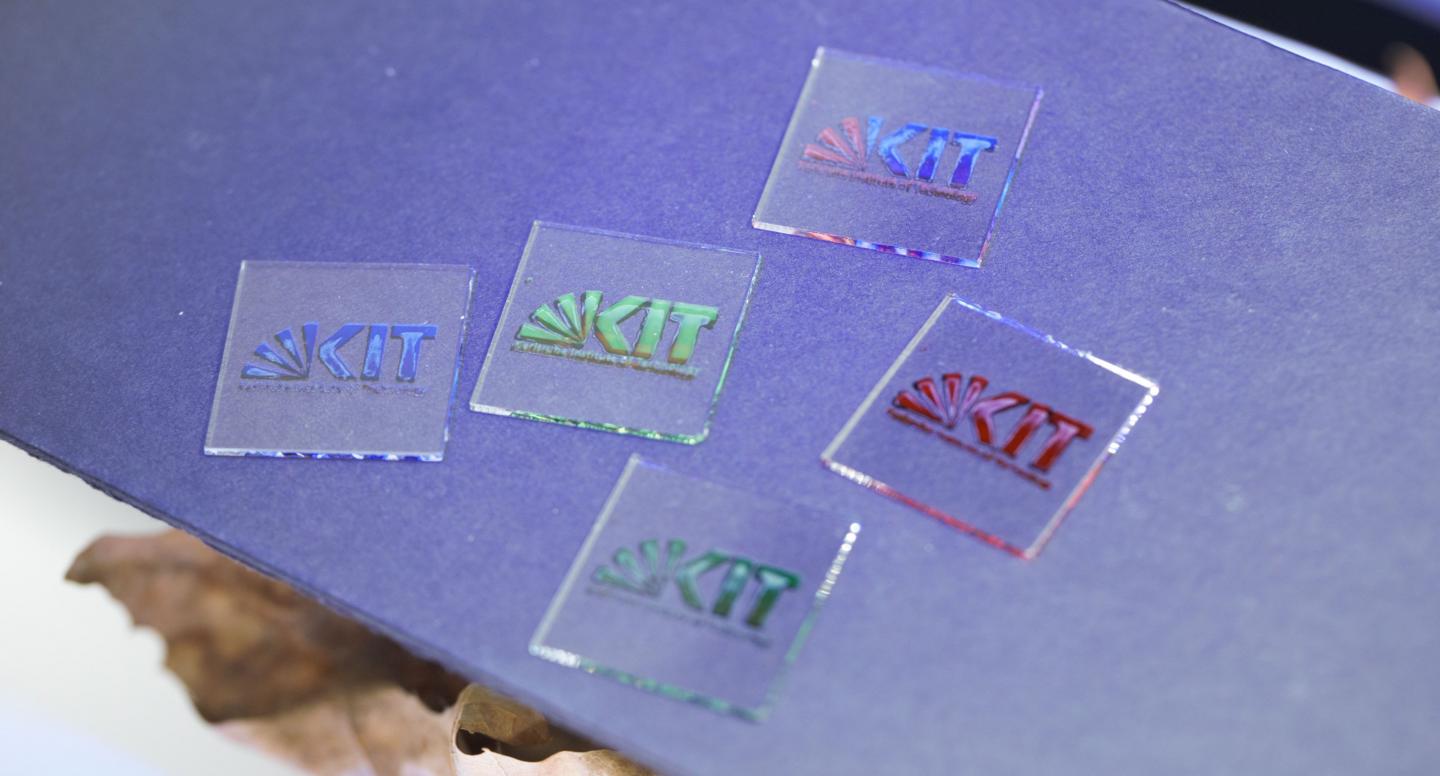PRINTPERO: German and Greek Researchers team up with Industrial Partners to Develop Printed Perovskite Solar Modules for Flexible Use in Buildings

Credit: Photo: IMT/KIT
The goal of PRINTPERO is to develop digitally printed, highly efficient and stable solar modules that can be integrated into roofs, facades, and windows. In the project coordinated at the Karlsruhe Institute of Technology (KIT), German and Greek researchers and industrial partners are demonstrating the technological feasibility of solar modules based on perovskite absorbers. They work on prototypes that can be freely designed in size, shape, and color. The Federal Ministry of Education and Research supports the project within the framework program Research for Sustainable Development (FONA).
Perovskite semiconductors are currently among the most promising materials for highly efficient and cost-effective next-generation solar modules. Thin-film solar cells based on these perovskites already achieve efficiencies of more than 23 percent in the laboratory. However, the processes currently used in research to manufacture perovskite solar cells cannot be transferred to industrial standards. “One goal of our project is therefore to replace laboratory processes by digital printing processes that run at low temperatures and are suitable for industrial production,” explains Dr. Ulrich W. Paetzold, head of the research group “Advanced Optics and Materials for Next Generation Photovoltaics” at KIT’s Institute for Microstructure Technology (IMT) and KIT’s Light Technology Institute (LTI) and coordinator of PRINTPERO (short for Printed Perovskite Modules for Building Integrated Photovoltaics).
In the PRINTPERO project, researchers and industrial partners from Germany and Greece are cooperating to develop digitally printed solar modules based on perovskite semiconductors that are not only highly efficient and stable, but also meet a wide range of architectural requirements for integration in buildings. They work on prototypes which can be designed in different shapes and colors. To achieve these goals, the participating researchers use the potential of digital inkjet printing. In addition, they develop printable luminescent layers to realize different color impressions and protect solar cells from harmful UV radiation (see photo).
Together with the project partners, the Karlsruhe researchers are also working on improving the stability of the perovskite solar cells, connecting several of these cells in series to form large-area solar modules, and encapsulating the modules to protect them from moisture and the resulting decay.
PRINTPERO includes the research institutes KIT and the Technological Educational Institute of Western Greece as well as the solar industry companies SUNOVATION Produktion GmbH (Aschaffenburg/Germany) and Brite Hellas S.A. (Thessaloniki/Greece). Within the framework program Research for Sustainable Development (FONA), the Federal Ministry of Education and Research (BMBF) is funding the three-year German-Greek cooperation project that was launched in 2018.
###
Publication on the subject:
Design and Color Flexibility for Inkjet-Printed Perovskite Photovoltaics.
Stefan Schlisske, Florian Mathies, Dmitry Busko, Noah Strobel, Tobias Rödlmeier, Bryce S. Richards, Uli Lemmer, Ulrich W. Paetzold, Gerardo Hernandez-Sosa, and Efthymios Klampaftis: ACS Applied Energy Materials. 2018.
https:/
More about the KIT Energy Center: http://www.
Press contact: Martin Heidelberger, Redakteur/Pressereferent, Tel.: +49 721 608-21169, [email protected]>
Being „The Research University in the Helmholtz Association”, KIT creates and imparts knowledge for the society and the environment. It is the objective to make significant contributions to the global challenges in the fields of energy, mobility and information. For this, about 9,300 employees cooperate in a broad range of disciplines in natural sciences, engineering sciences, economics, and the humanities and social sciences. KIT prepares its 25,100 students for responsible tasks in society, industry, and science by offering research-based study programs. Innovation efforts at KIT build a bridge between important scientific findings and their application for the benefit of society, economic prosperity, and the preservation of our natural basis of life.
Media Contact
Monika Landgraf
[email protected]
49-721-608-21105
Original Source
https:/




